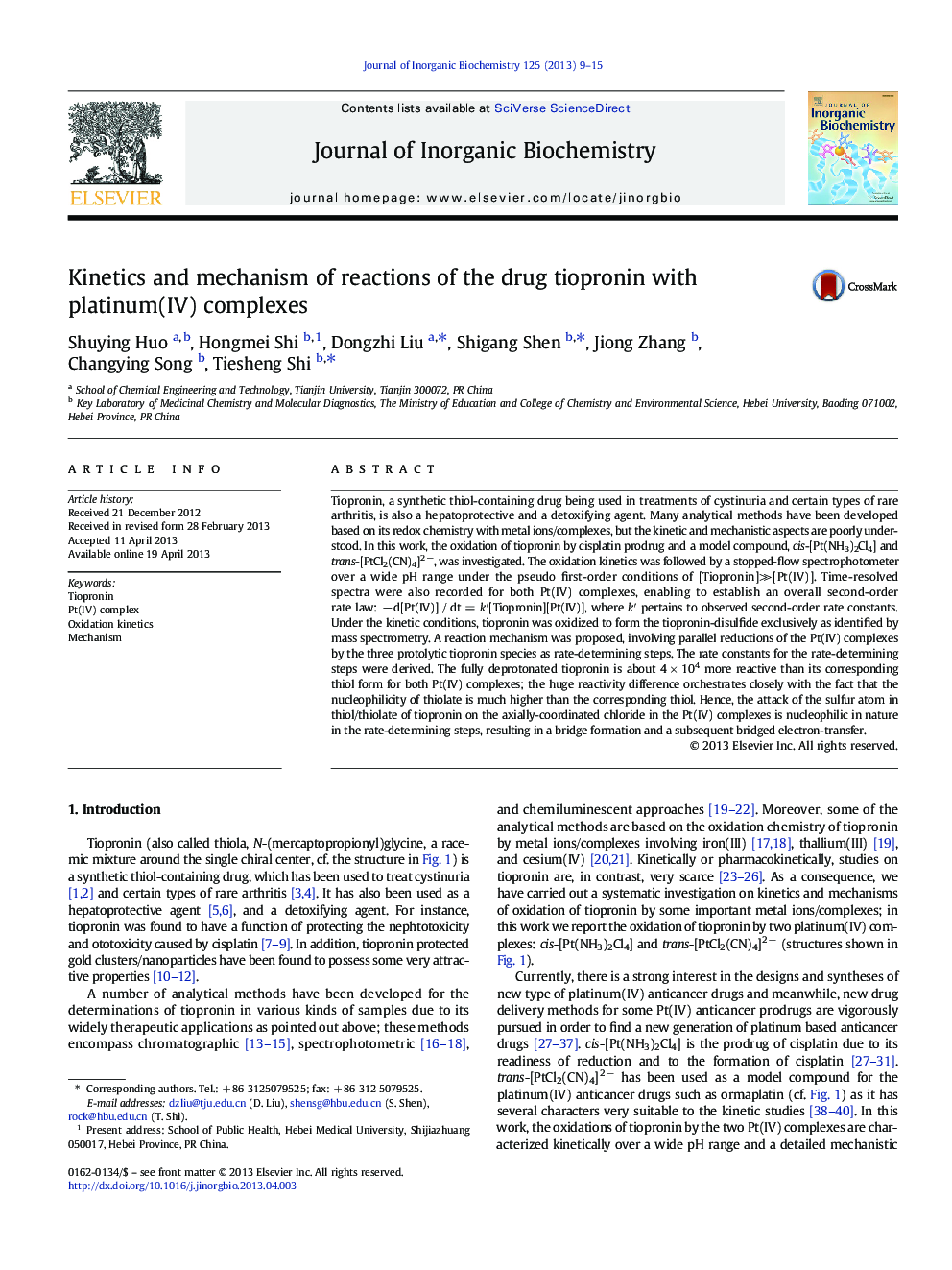| کد مقاله | کد نشریه | سال انتشار | مقاله انگلیسی | نسخه تمام متن |
|---|---|---|---|---|
| 1317591 | 1499462 | 2013 | 7 صفحه PDF | دانلود رایگان |

• The oxidation of tiopronin by cis-[Pt(NH3)2Cl4] and trans-[PtCl2(CN)4]2 − was studied.
• Tiopronin was oxidized to tiopronin disulfide exclusively.
• A general rate law was established over a wide pH range.
• A detailed reaction mechanism is proposed accordingly.
Tiopronin, a synthetic thiol-containing drug being used in treatments of cystinuria and certain types of rare arthritis, is also a hepatoprotective and a detoxifying agent. Many analytical methods have been developed based on its redox chemistry with metal ions/complexes, but the kinetic and mechanistic aspects are poorly understood. In this work, the oxidation of tiopronin by cisplatin prodrug and a model compound, cis-[Pt(NH3)2Cl4] and trans-[PtCl2(CN)4]2 −, was investigated. The oxidation kinetics was followed by a stopped-flow spectrophotometer over a wide pH range under the pseudo first-order conditions of [Tiopronin]≫[Pt(IV)]. Time-resolved spectra were also recorded for both Pt(IV) complexes, enabling to establish an overall second-order rate law: − d[Pt(IV)] / dt = k′[Tiopronin][Pt(IV)], where k′ pertains to observed second-order rate constants. Under the kinetic conditions, tiopronin was oxidized to form the tiopronin-disulfide exclusively as identified by mass spectrometry. A reaction mechanism was proposed, involving parallel reductions of the Pt(IV) complexes by the three protolytic tiopronin species as rate-determining steps. The rate constants for the rate-determining steps were derived. The fully deprotonated tiopronin is about 4 × 104 more reactive than its corresponding thiol form for both Pt(IV) complexes; the huge reactivity difference orchestrates closely with the fact that the nucleophilicity of thiolate is much higher than the corresponding thiol. Hence, the attack of the sulfur atom in thiol/thiolate of tiopronin on the axially-coordinated chloride in the Pt(IV) complexes is nucleophilic in nature in the rate-determining steps, resulting in a bridge formation and a subsequent bridged electron-transfer.
Second-order rate constants k′ as a function of pH at 25.0 °C and ionic strength of 1.0 M for oxidation of tiopronin by cis-[Pt(NH3)2Cl4] and trans-[PtCl2(CN)4]2 − (data points were obtained). The solid curve was obtained by fitting Eq. (6) the experimental data by use of a weighed nonlinear least-squares method.Figure optionsDownload as PowerPoint slide
Journal: Journal of Inorganic Biochemistry - Volume 125, August 2013, Pages 9–15